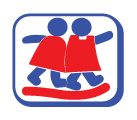5 Ways Craft Projects Benefit Your Child
Many preschools, parents, and even babysitters rely on crafts to entertain their charges. These simple projects are more than just busy work-the tasks involved in crafts help children learn and develop as they have fun.
In this blog, we list five benefits that craft projects at home and at school can provide to your little one.
1. Bilateral Coordination
The term “bilateral coordination” applies to two vital types of child development. The primary type of bilateral coordination is the ability to use both hands in tandem movements. Using scissors, coloring, and doing other common crafting tasks encourage children to figure out how to make their hands work together.
Bilateral coordination is an essential foundation for developing fine motor skills, which we’ll discuss in more detail in section three.
The second type of bilateral coordination is neurological. This type of bilateral coordination involves the right and left hemispheres of the brain working together to respond to stimuli. Because crafts involve technical elements and artistic elements, these projects stimulate both the left and right brains.
Early development of bilateral brain coordination improves overall cognitive development throughout your child’s life.
2. Creativity
It’s important to give children plenty of opportunities to flex their creative muscles, as we discussed in our previous blog, “The Importance of Fostering Children’s Creativity.” Creativity teaches problem solving, future thinking, and awareness.
Children are blessed with vivid imaginations that allow them to learn through play. Crafts give children an outlet to draw, build, or otherwise put their vision on paper.
3. Fine Motor Skills
Early childhood is when your child develops the ability to accurately control small-scale physical motions. This ability can also be referred to as “fine motor skills.”
Your child will use his or her fine motor skills to drive, type, and work in the future. But for now, drawing, cutting, and pasting help him or her strengthen the muscles in the hands as well as the neurological pathways that control fine-motor movement.
4. Self-Expression
Learning how to communicate thoughts and feelings is an important part of growing up. For many children, articulating these abstract concepts with words is difficult. Having a child illustrate their ideas is a first step toward effective self-expression.
This concept is particularly true for children who are introverted or for those who have speechdevelopment delays. Misshapen paper snowflakes and thick lines of glitter glue may not look like art, but they provide your child with an avenue to explore ideas that they can’t otherwise explain.
5. Self-Management
To adults, many craft projects are simple activities that don’t require a lot of decision making, selfcontrol, or thought. To children, however, craft projects often present a series of choices that can help them develop executive function skills like self-management.
For example, your child may think that cutting multiple sheets of paper at once will save time but discover that the end result isn’t as pretty. Making the decision to go slower to create a higher-quality end product shows self-management and future thinking.
Crafts also teach patience and the ability to identify causal relationships. For example, children learn that glue needs time to dry, thus requiring patience, and that not waiting long enough could break apart the project. This is a form of cause and effect.
Encourage your child to cut, glue, and glitter to help him or her learn and develop in the areas listed above.
At Kid’s Country Learning Center, creative and engaging craft projects are staples of our curriculum and classrooms. Learn more about our range of activities and how these activities help your child to thrive on our About Us page.


